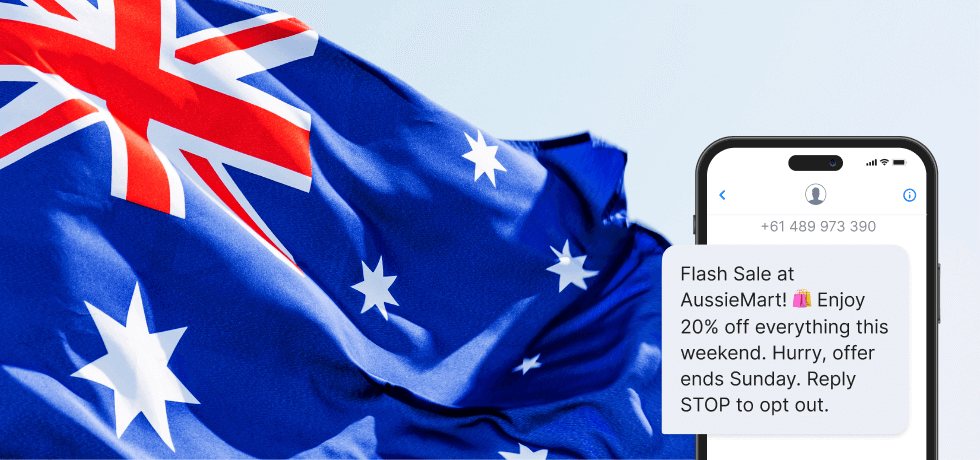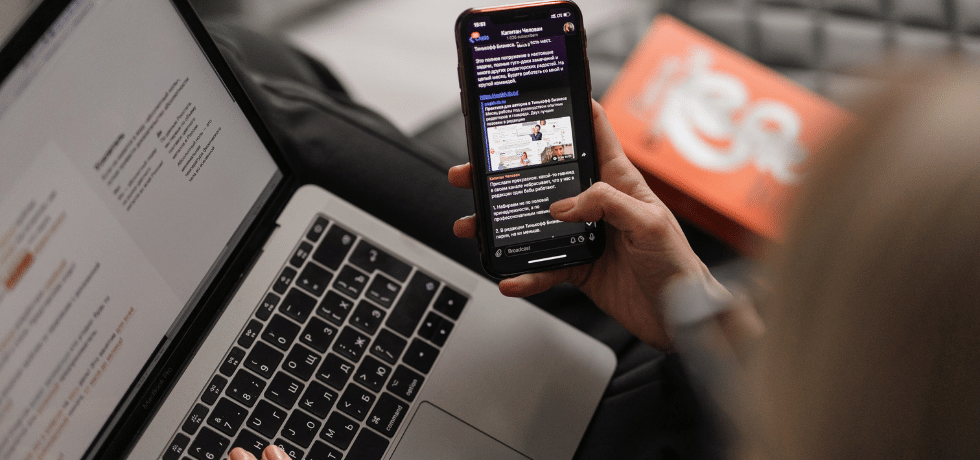
Follow-up emails enhance business relationships and operational efficiency by keeping the conversation going. They increase response rates and prevent misunderstandings by keeping everyone on the same page. That’s why it’s important to use professional follow-up email templates for business communication.
Receiving a timely response is something customers have come to expect nowadays. With 35-50% of sales going to the first-responding vendor, it’s no wonder that speed is a crucial factor in the sales process.
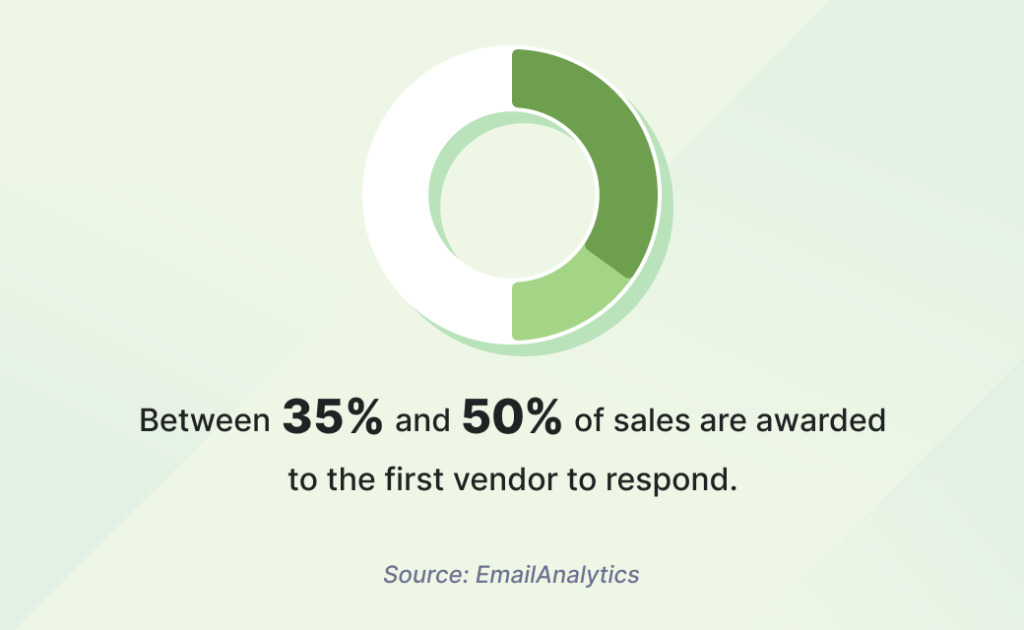
Follow-up emails play a critical role in this context. They ensure that your business remains at the forefront of potential clients’ minds, demonstrating your commitment to promptly meeting their needs.
The following article explores the strategic importance of follow-up emails. It includes 15 follow-up email templates that you can leverage to improve your business communication strategy, enhance customer engagement, and drive more sales.
When to send a professional follow-up email
Let’s discuss the appropriate timing for sending follow-up emails in various scenarios.
Following a business meeting
⏰ Ideal timing: Within 24 hours
- This type of email helps reinforce the key points discussed and keeps the momentum going.
- This prompt follow-up ensures that the conversation and any action points remain fresh in everyone’s mind.
- It’s great for repeating the agreed-upon next steps.
Post-networking event
⏰ Ideal timing: 24-48 hours
- Acting according to the above interval keeps the interaction relevant and the connection active.
- It’s early enough to express your gratitude for the interaction and propose a further meeting. If you see potential for collaboration or partnership, you can even set a call.
- Be sure to include details from the conversation to jog their memory and show that you were genuinely engaged.
After sending a proposal or quote
⏰ Ideal timing: 3-5 business days
- This interval is soon enough to keep the proposal top of mind while also showing that you respect their time to digest and discuss it internally.
- It establishes the ideal balance between expressing interest in moving forward and offering space for a careful decision.
- You should phrase your follow-up as a gentle reminder. Offer to clarify any questions they might have about the proposal.
Achieving standout follow-up email subject lines
A compelling subject line makes a great first impression. It marks the difference between an unopened email and the one that gets through, and it also prevents your emails from ending up in spam.
A good email open rate is between 17% and 28%, depending on the industry. However, with a good email subject line, you can beat this average. Alexandra Ilie, our product marketing manager, shows how important follow-up email subject lines are:
“Our follow-up cold email outreach campaign to encourage potential customers to try the new Bring your own CPaaS (BYOC) feature had a 50% open rate, well beyond the average. We credit a lot of this success to our subject lines, which were tailored for separate user personas depending on their pain points, job roles, or industry verticals. We always try to keep our subject lines short and to the point.”
To write effective subject lines that boost open rates, you need to be concise, personalize, and incorporate keywords. All this, combined with a sense of urgency, will get you noticed.
Keep your subject lines free of spam words like “free,” “help,” or “reminder.” Offer a valuable sneak peek that hints at what the email is about.
Here are some examples of effective follow-up email subject lines.
Following a business meeting
- “Meeting recap & action plan”
- “Next steps after our meeting”
- “Action items from our discussion”
- “Quick follow-up from today’s meeting”
- “John, your thoughts on today’s meeting?”
Post-networking event
- “Connecting after [Event name]”
- “Great meeting you at [Event name]”
- “Follow-up from [Event name]: Next steps?”
- “Your insights on [topic discussed at Event name]”
- “John, let’s continue our conversation from [Event name]”
After sending a proposal or quote
- “Re: Next steps on the proposal sent”
- “Re: Proposal for [Project name]”
- “John, feedback on our submitted proposal?”
- “Checking in: Any questions on the proposal?”
- “Update required: Proposal for [Project name]”
How to write a follow-up email
Next, let’s discuss how a well-structured email with clear, concise content can significantly increase your chances of getting a timely response.
How to start a follow-up email
A personalized greeting sets the tone for your follow-up email. It shows that you value your relationship with your recipient, grabs their attention, and sets the tone for future communication.
Make sure to include details from your latest interaction to express interest and help remind the recipient of what you last discussed. If any updates happened in the meantime, include those as well.
Examples:
- “It was great to hear your insights about [specific project or topic] during our call.”
- “I saw the latest update you posted on [Platform/Service name], and it aligns perfectly with what we discussed.”
What to write in a follow-up email body
Use the main body content to clearly state why you are following up. This could be to inquire about a decision, provide additional information, or request further action.
After you ensure the recipient understands what you are expecting, include any questions you might have in a polite manner.
Example: “Could you provide an update on your timeline for this decision?”
📚 Spark interest in your recipient by including additional resources like links to recent articles, case studies, or data that emphasizes your case. This proactive approach will help you gain a competitive edge and, in time, help build brand awareness.
How to end a follow-up email
An effective closing statement in a follow-up email serves as a gentle nudge toward the action you want the recipient to take. It should express appreciation, repeat the call to action (CTA), and provide any extra help if needed.
Here are some examples that work great for various scenarios:
- “Please let me know a suitable time to discuss this further.”
- “If there are any other documents or details you need, I’m just an email away.”
- “Thank you for considering my request. I look forward to your valuable feedback.”
Signing off is the final touch that makes an impression on the recipient. Make sure to stay consistent with your email’s tone and avoid casual phrases like “Cheers” or “Later,” which do not match the professional context.
Here are some examples to guide you along.
Formal and universal
- “Best regards,”
- “Sincerely,”
- “Respectfully,”
Friendly but professional
- “Kind regards,”
- “Best wishes,”
- “Warm regards,”
Context-specific
- “Looking forward to your reply,”
- “Thank you once again,”
- “With appreciation,”
Turn follow‑ups into real responses with Textmagic
Personalize and deliver your messages via email or SMS, and track replies effortlessly.
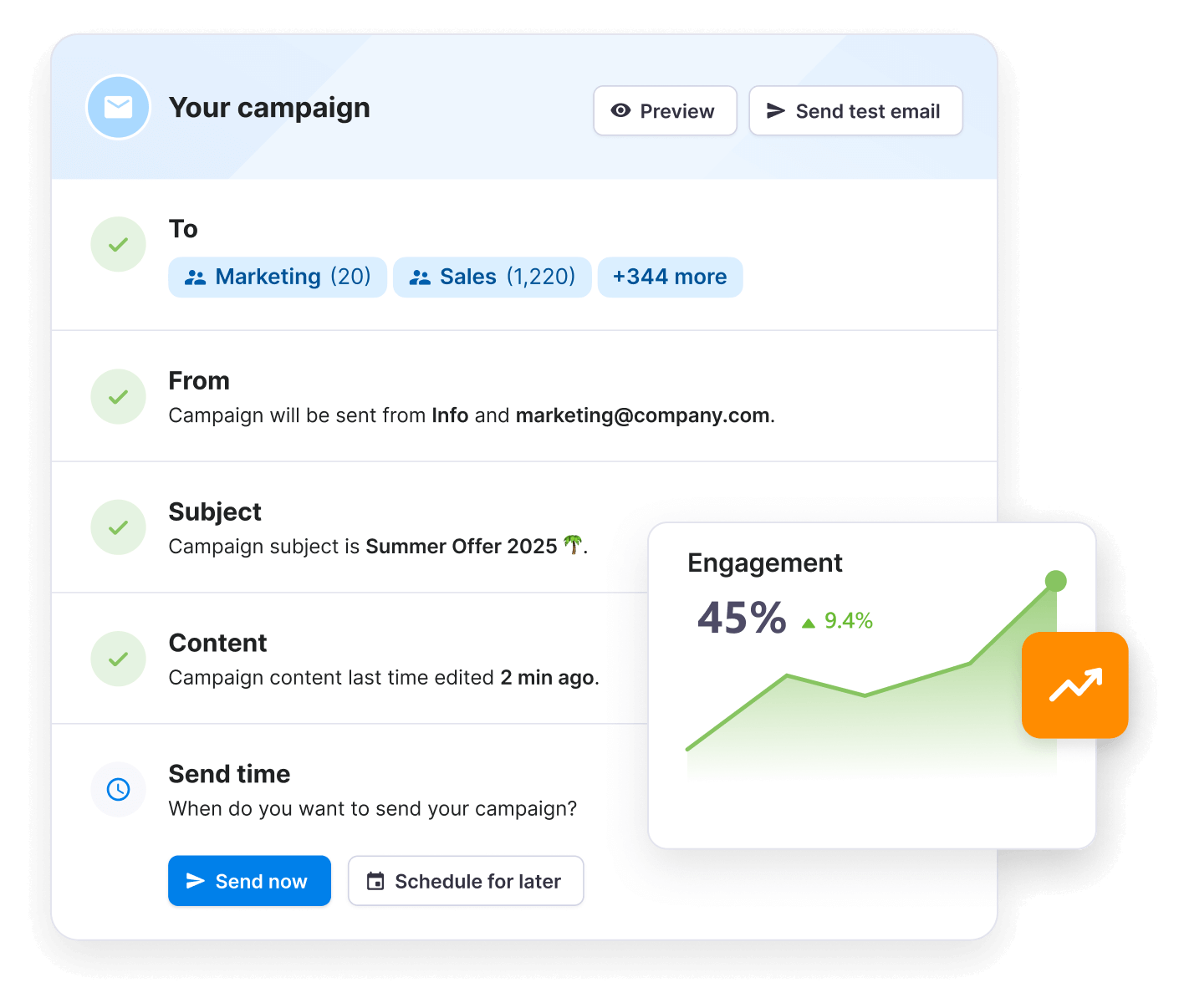
15 follow-up email templates
We’ve compiled the following follow-up email templates for the most common business scenarios.
1. Follow-up email after no response
Subject line: Re: Next steps on [Project name] proposal?
Hi [Recipient name],
I trust your week has been productive. I’m following up on the proposal I sent over for [Project name] on [date]. I understand that you have a busy schedule, but I wanted to check in and see if you have had a chance to review it.
If you have any questions or need further clarification, please let me know. I am eager to move forward and would be happy to provide any additional information you may need.
Thank you for considering this. I look forward to your feedback!
Best regards,
[Your name]
[Your position]
[Your contact information]
2. Polite follow-up email sample for a request
Subject line: Reminder: Request for [specific information] for [Project name]
Dear [Recipient name],
I hope you’re having a productive day. I am writing to follow up on my previous email regarding [specific information or request]. Your insights would be incredibly beneficial to our ongoing project, and I wanted to see if you’ve had a chance to consider my request.
I understand that you have a tight schedule, and I would appreciate your help with this. Please let me know if there’s a convenient time to discuss this further.
Thank you once again for your time and support.
Warm regards,
[Your name]
[Your position]
[Your contact information]
3. Professional follow-up email after meeting
Subject line: Follow-up on our meeting about [meeting topic]
Hi [Recipient name],
Thank you for meeting with me on [date]. I enjoyed our discussion about [specific topic] and found your insights extremely valuable.
To recap, [briefly summarize the main points discussed]. As agreed, I will [next steps], and I look forward to your feedback on this.
Please let me know if you need any further information or if there’s anything else you’d like to discuss. Thank you once again for your time!
Best,
[Your name]
[Your position]
[Your contact information]
4. Follow-up email sample to potential client
Subject line: Checking in: Next steps for [Your product/service name]
Hello [Recipient name],
I wanted to check in and see how things are going. I’m just following up on our conversation about [Your product/service name] from [last point of contact]. Have you had a chance to consider our proposal?
I believe that [Your product/service name] can really help with [recipient’s needs or pain points discussed]. If you have any questions or need further details, I’m here to assist.
Looking forward to your thoughts!
Warm regards,
[Your name]
[Your position]
[Your contact information]
5. Follow-up email for an update on a project
Subject line: Update needed: Status of [Project name]?
Dear [Recipient name],
I’m reaching out to see how [Project name] is progressing. I am reaching out to request an update on [Project name]. Last we discussed you mentioned that [mention any relevant details or timeline].
Could you please provide the latest status? If there are any areas where you need additional information or support from our side, feel free to let me know.
Thank you for your continued cooperation.
Best regards,
[Your name]
[Your position]
[Your contact information]
6. Trade show follow-up email
Subject line: Great connecting at [Trade show name]!
Hello [Recipient name],
It was a pleasure meeting you at [Trade show name] last week! I enjoyed learning about [something specific about the recipient’s business] and discussing how [Your product/service name] can support your goals.
I’ve attached [relevant materials or links] for your review. Please let me know if you have any questions or if there is a time we can discuss this further.
Looking forward to the opportunity to work together.
Best wishes,
[Your name]
[Your position]
[Your contact information]
7. Sales follow-up email after no response
Subject line: Re: Opportunity for [Recipient’s business name]?
Hi [Recipient name],
I wanted to touch base with you again regarding [Your product/service name], as I haven’t heard back from our last conversation. I understand you’re busy, but I believe [Your product/service name] can [describe key benefits].
Could we schedule a quick call or meeting to discuss any potential questions or concerns you might have? I’m available [provide a brief range of dates/times].
Thank you for your time, and I look forward to your reply!
Best regards,
[Your name]
[Your position]
[Your contact information]
8. Follow-up on a cold outreach email
Subject line: Checking in: Opportunities for collaboration with [Recipient’s business name]
Hi [Recipient name],
I wanted to reconnect and hear your thoughts. I wanted to touch base regarding my last email about potential collaboration opportunities between [Recipient’s business name] and [Your company name].
I believe there are mutually beneficial possibilities that we could explore together.
Could we schedule a time next week to discuss this in more detail? I’d love to hear your thoughts and see how we can move forward. If there are any specific areas or questions you’d like to focus on, please let me know so we can tailor our conversation accordingly.
Thank you for your consideration, and I look forward to your response.
Best regards,
[Your name]
[Your position]
[Your contact information]
9. Follow-up on a job application
Subject line: Application follow-up for [job title] position
Hi [Recipient name],
Hope your day is going well. I’m writing to check in on my application for the [job title] position that I submitted on [date].
Could you please share an update on the status of my application? I’m really keen on finding out if there’s a way for us to discuss my potential fit for the team.
I understand that there’s a lot to consider with hiring, and I sincerely appreciate your time and effort in this process.
Looking forward to the possibility of working together,
[Your name]
[Your contact information]
10. Networking follow-up email
Subject line: Great meeting you at [Event name]
Hi [Recipient name],
Our discussion on [specific topic] sparked some fresh ideas on how we could work together.
I wanted to follow up and express my interest in staying connected. There are several ways we could support each other’s work and goals. If you’re open to it, I’d like to continue our conversation over coffee or a virtual meeting in the next couple of weeks.
Please let me know if there’s a time that works best for you, or feel free to suggest an alternative. Looking forward to hearing from you.
Warm regards,
[Your name]
[Your position]
[Your contact information]
11. Follow-up email after sending a quote
Subject line: Follow-up on [Your product/service name] quote
Hi [Recipient name],
I wanted to circle back on the quote I sent you for [Your product/service name] on [date].
I understand that you may have a busy schedule, but I wanted to check if you’ve had a chance to review the quote. If you have any questions or need further clarification, please let me know.
Looking forward to your feedback!
Best regards,
[Your name]
[Your position]
[Your contact information]
12. Post-issue resolution email
Subject line: Hey [Recipient name], is everything working as expected?
Hi [Recipient name],
I wanted to follow up and ensure that the issue you were experiencing with [mention the issue] is fully resolved.
If you have any more questions, please let me know.
Best regards,
[Your name]
[Your position]
[Your contact information]
13. Follow-up email after sending a survey
Subject line: Re: We value your feedback on [survey topic]
Hi [Recipient name],
I hope you’re doing well. I just wanted to check in about the survey we sent you regarding [survey topic]. Your feedback means a lot to us, as it helps us improve our services.
If you haven’t had the chance to complete it yet, please share your thoughts. We would really appreciate your insights.
Thanks so much for your time and support.
Warm regards,
[Your name]
[Your position]
[Your contact information]
14. Follow-up email to send after a demo
Subject line: Great connecting! Next steps after your demo
Hi [Recipient name],
It was a pleasure to walk you through our [product/service] during yesterday’s demo. I’m excited about the potential opportunities for your team and how our solution can address your needs.
I wanted to ask if you have any questions or need further clarification on any aspect of the demo.
Please let me know if you’re available for a follow-up conversation or if there’s anything specific you’d like to explore further.
Looking forward to your thoughts.
Best regards,
[Your name]
[Your position]
[Your contact information]
15. Final follow-up email
Subject line: Last touchpoint regarding [product/service]
Hi [Recipient name],
I’ve tried reaching out a few times without success. However, I understand how busy schedules can get. This will be my last attempt regarding our [product/service] discussion. If it’s still of interest or if the timing was just off, please get back to me.
If not, no worries at all. Best of luck with your projects at [Recipient’s business name]!
Kind regards,
[Your name]
[Your position]
[Your contact information]
Launch email campaigns with Textmagic
Ready to use these templates in real campaigns? Create, send, and track business emails & SMS in one single platform.

Three brilliant follow-up email examples
The following emails showcase best practices in action. They demonstrate how to effectively use follow-up email templates to communicate with your recipients.
Apple
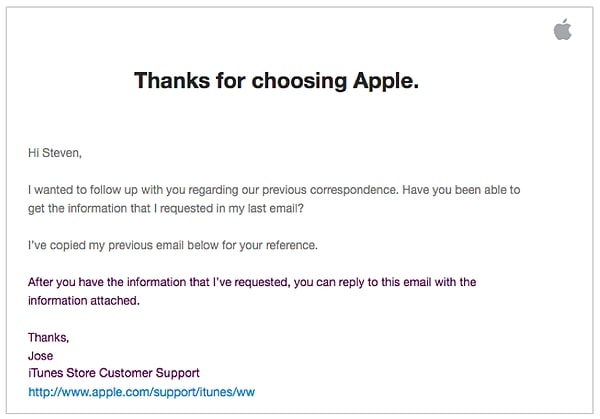
Image source: hubspot.com
What makes it stand out
- The email maintains Apple’s sleek and minimalist brand aesthetics, from the logo to the layout. This helps reinforce the brand identity and provides a visually pleasing and professional appearance.
- It invites the recipient to freely contact the company with any concerns regarding the iTunes Store. This promotes open communication and shows the company’s readiness to assist and engage with the customer further.
- Ending with a professional signature personalizes the message further and provides a direct contact point. The link to the support page offers an easy way for the customer to find more information or get help online.
WordStream
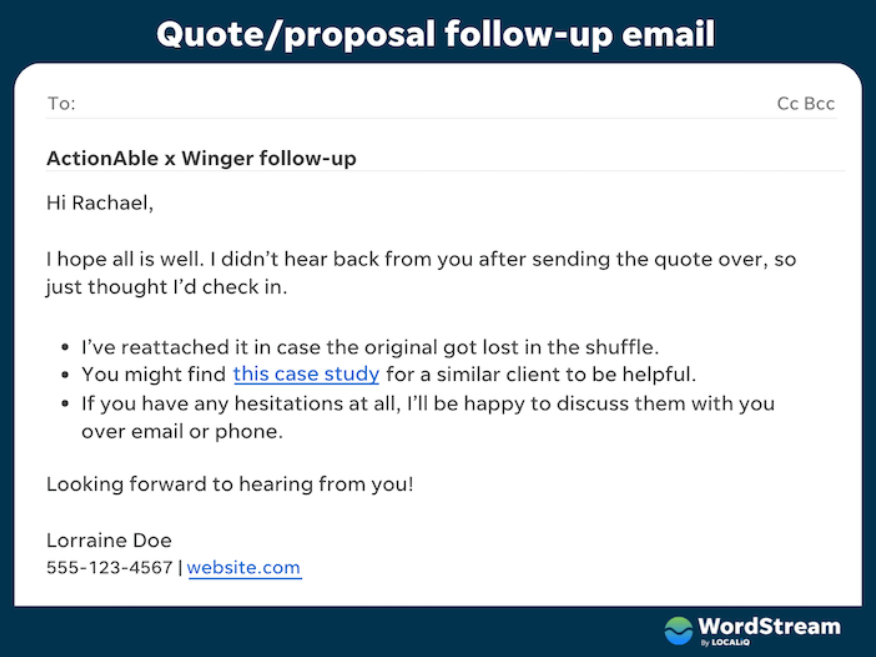
Image source: wordstream.com
What makes it stand out
- By reattaching the quote, the sender removes any burden on the recipient to dig through their emails to find the original. This shows consideration and understanding of the recipient’s potentially busy schedule.
- Offering a case study related to the recipient’s situation demonstrates thoroughness and a desire to provide useful information that could assist in the decision-making process. It adds value to the follow-up email beyond just a reminder.
- The email addresses the recipient by their first name, personalizing the interaction and making the communication feel more direct and friendly.
Twilio
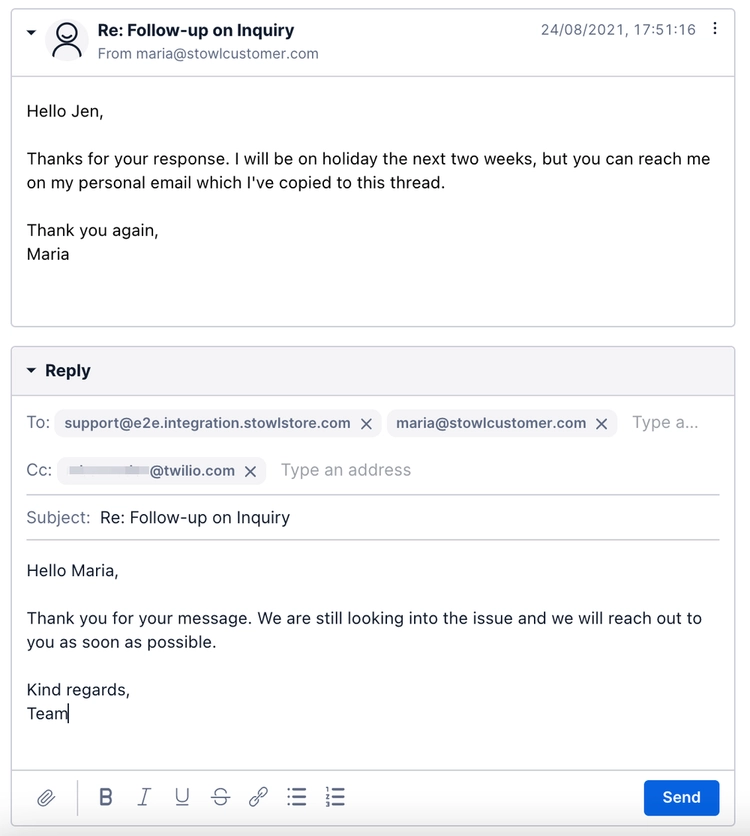
Image source: twilio.com
What makes it stand out
- The reply to the inquiry is timely. It acknowledges the sender’s message and indicates that the issue is being investigated.
- The email directly references the sender’s previous message. This helps in maintaining continuity in the conversation.
- The clarity of status is a big plus since the email mentions that the issue is still being investigated.
Common follow-up mistakes to avoid
These are the most common pitfalls found in follow-up emails:

Overly aggressive language or demanding a quick response can put pressure on the recipient and damage the relationship. Frequency is equally important. Sending too many emails in a short period can annoy the recipient and even end up in spam.
Typos, grammatical errors, and formatting issues can make your email look unprofessional and lead to misunderstandings. Make sure to spellcheck it right before hitting “Send.” Personalize each email to keep them from seeming impersonal.
Here’s how to avoid these mistakes to maintain professionalism and effectiveness.
- Do not demand action; simply suggest it. Ensure that your follow-up email communicates a friendly, collaborative tone rather than demanding or urgent.
- Don’t jump the gun. Allow sufficient time between communications. One-week intervals work best in most cases, but that may vary according to industry.
- Include important details like the date of your last interaction and the project’s name or event. This helps the recipient remember you from his/her previous interactions.
How to close more deals with follow-up emails
Regular, thoughtful follow-ups show that you are attentive and committed, which builds trust with your prospects.
Always emphasize your proposal by adding links to your latest blog posts or industry reports. This helps prospects make an informed decision and tips the balance in your favor in case your competitors fail to include such details in their emails.
Persistence pays off because not all prospects respond immediately. However, being persistent does not mean being disrespectful. Continue to follow up in a manner that shows you value their time and decision-making process.
🕵️ Once you have an answer, use the information to fine-tune your approach and address any concerns that may arise. If needed, switch things up by choosing different subject lines and content or even sending intervals.
Leverage follow-up emails for better engagement
Follow-up emails are everything you need to maintain communication and nurture relationships in a professional setting. They enhance engagement, ensure continuity in conversations, and help drive sales.
The follow-up email templates and tips we included in the article will help you create more meaningful relationships with your business stakeholders. Start engaging more effectively and experience better business outcomes!
Keep conversations going with Textmagic
Turn templates into active campaigns, automate reminders, and monitor engagement from one platform.

Frequently Asked Questions (FAQs)
Start with a friendly greeting, reference your previous message or interaction, and clearly state the reason for following up. Keep the tone respectful, concise, and focused on providing value or requesting a response.
Time your follow-ups appropriately (typically 2–5 days after the initial message) and avoid sounding pushy. Offer context, be considerate of the recipient’s time, and show genuine interest in moving the conversation forward.
Phrases like “Just checking in on my previous message,” or “I wanted to follow up regarding…” work well. They’re polite, direct, and convey your intent without sounding aggressive.
A gentle follow-up is a message that shows patience and understanding while still prompting a reply. It’s typically warm, non-urgent, and appreciative of the recipient’s time, often framed as a reminder or check-in.
Related articles
Australia SMS marketing compliance guide for businesses
While legal in Australia, SMS marketing is governed ...
Omnisend vs. Textmagic: Which platform is right for your business?
To build genuine customer relationships, businesses ...
4 Easy HubSpot SMS automations with Textmagic and Zapier
Today, we will continue our series of integration tu...
8 Proven strategies to boost B2B customer retention in 2025
Acquiring new customers is more expensive than ever,...
What is Bring Your Own Carrier (BYOC)?
Bring Your Own Carrier (BYOC) is an innovative commu...
